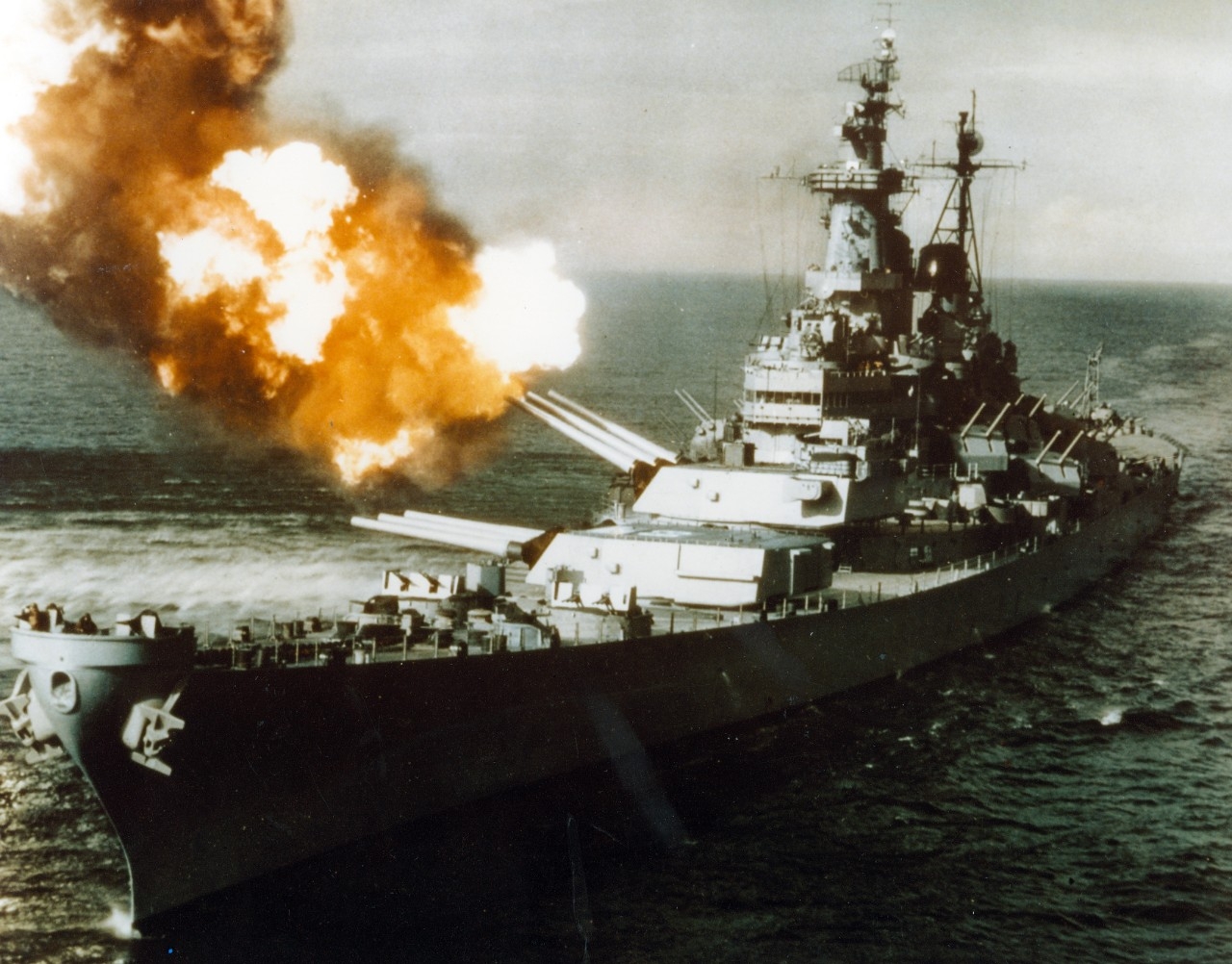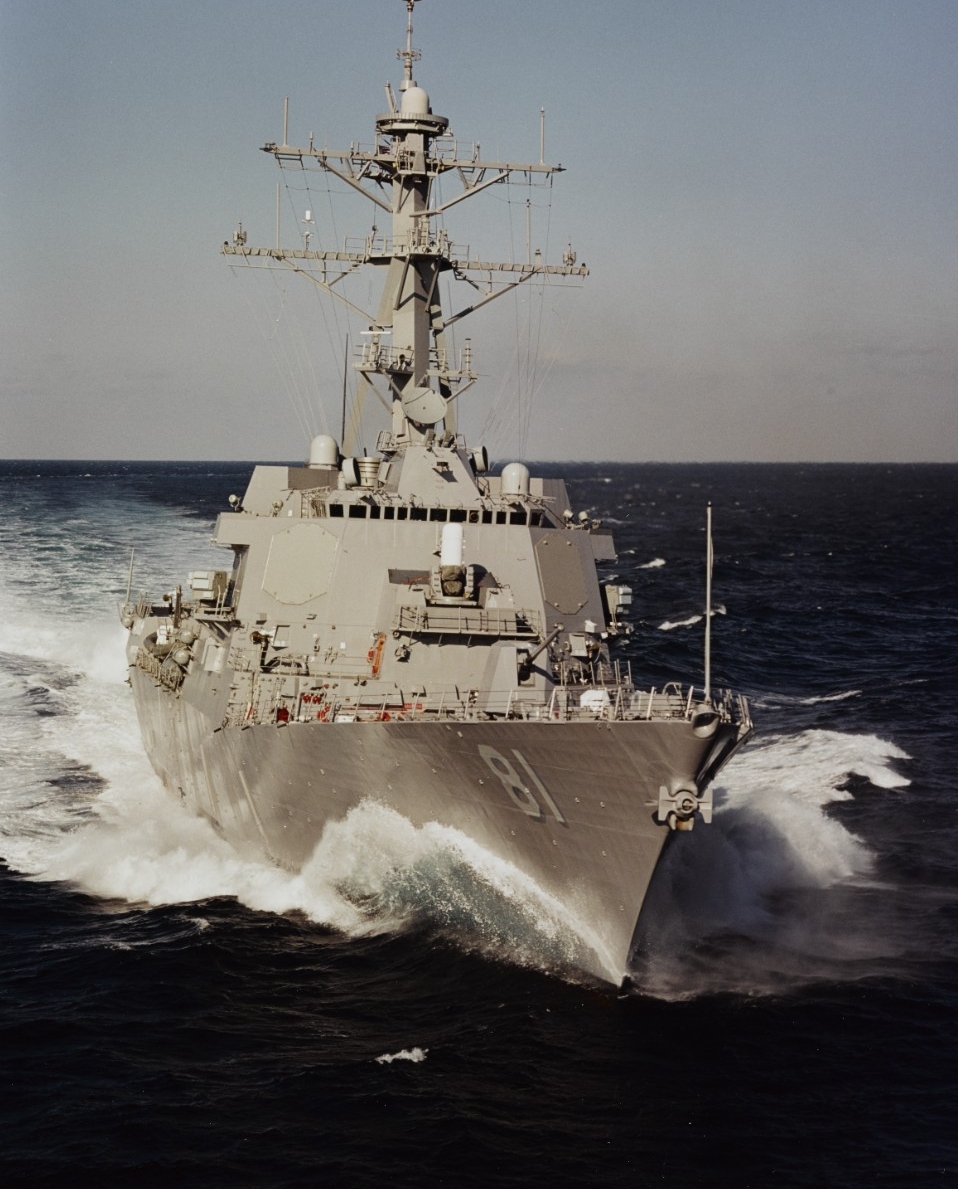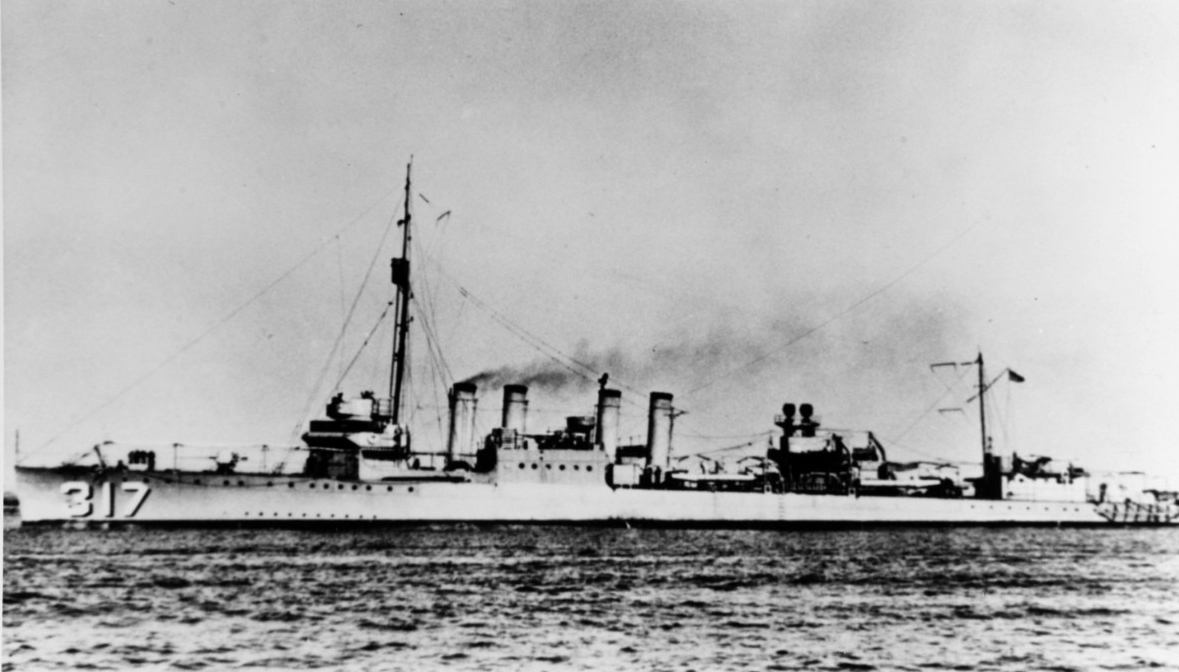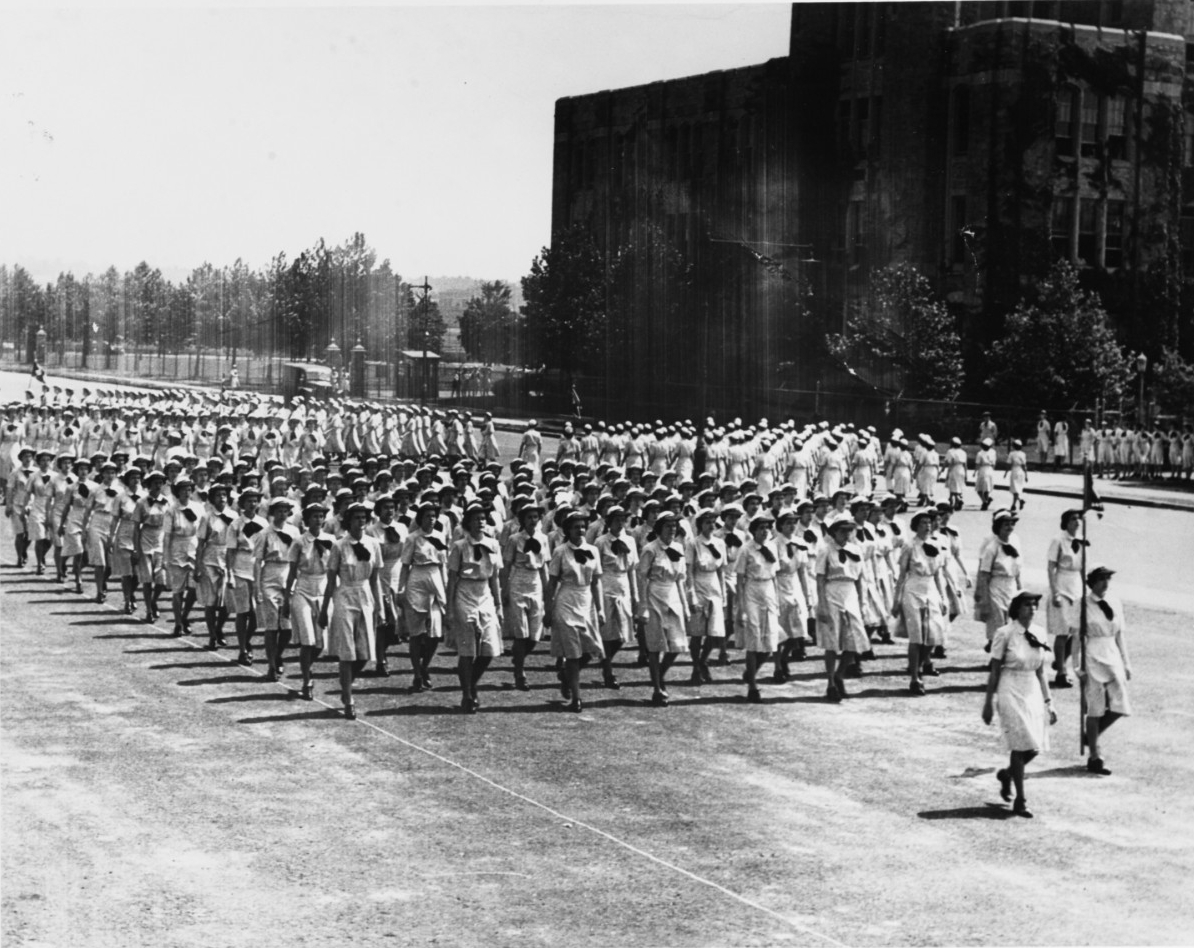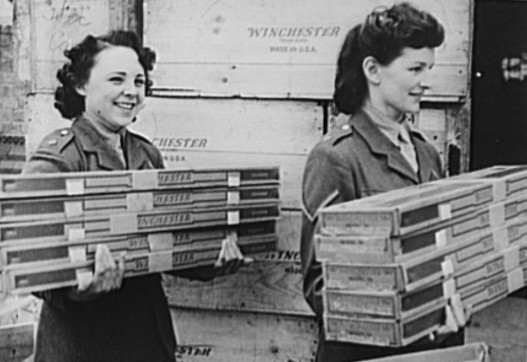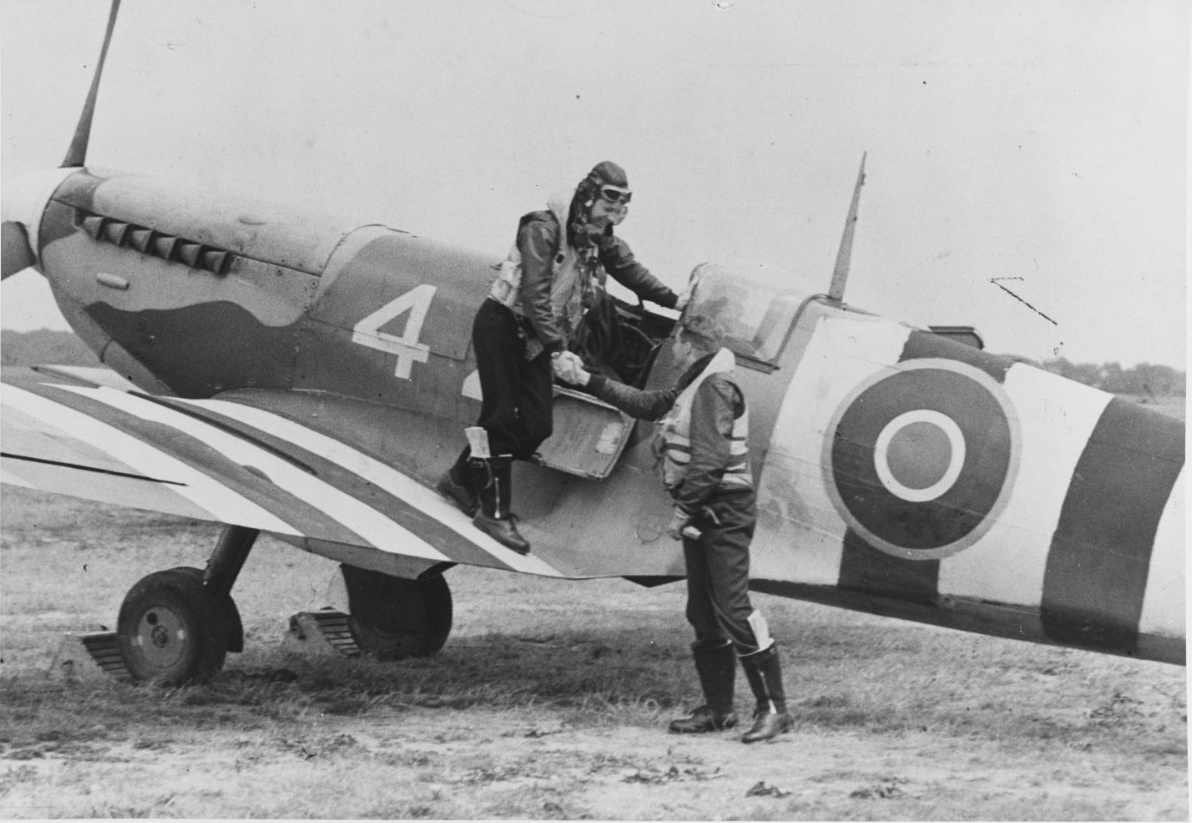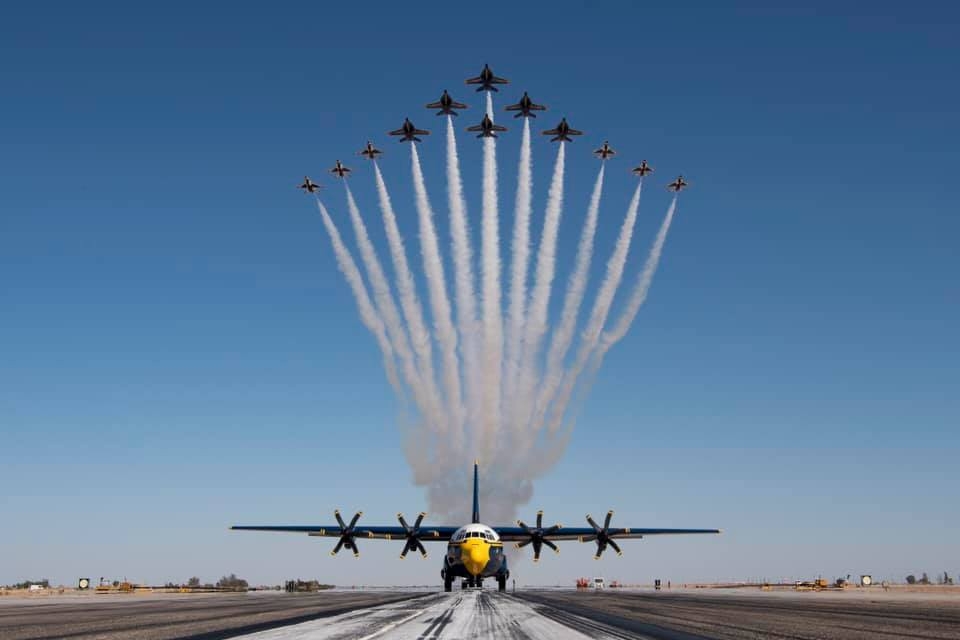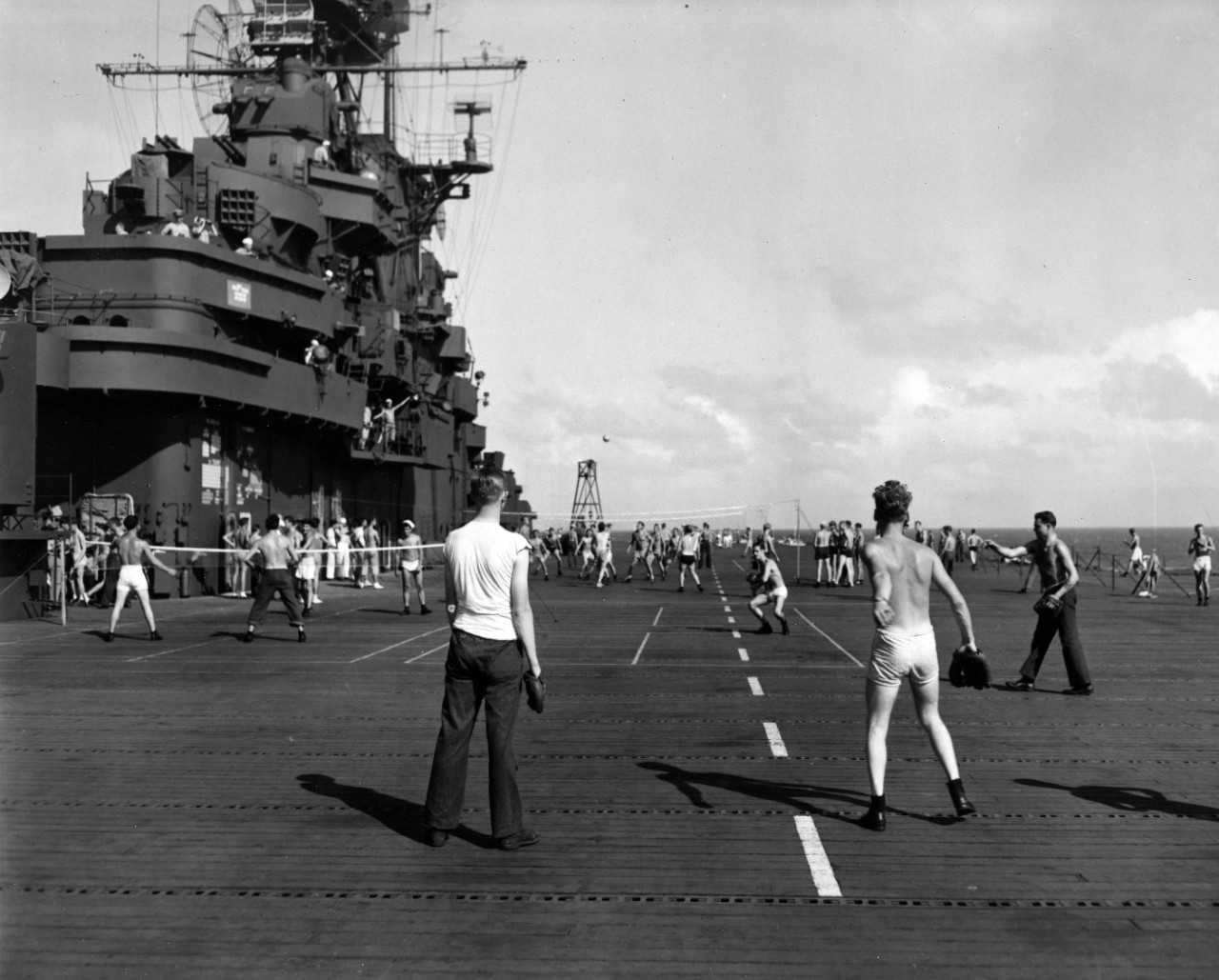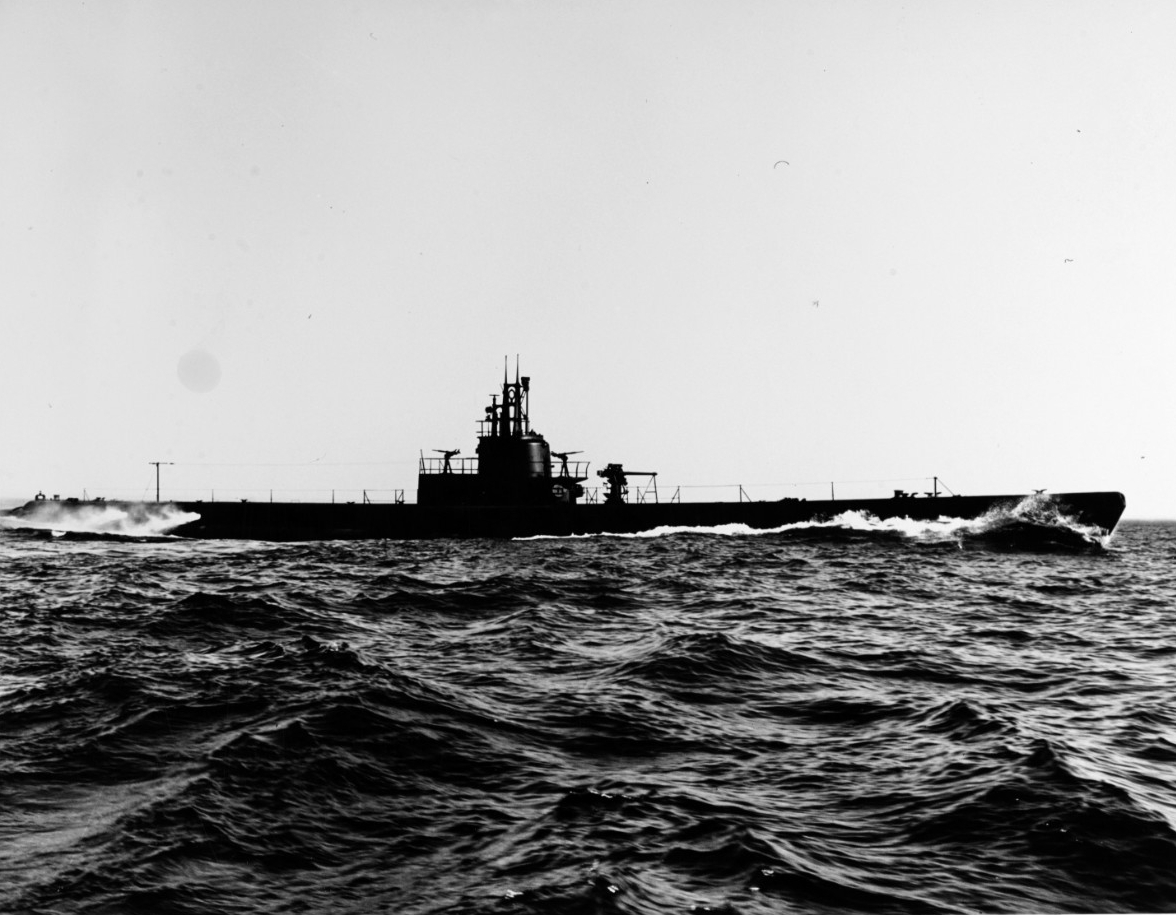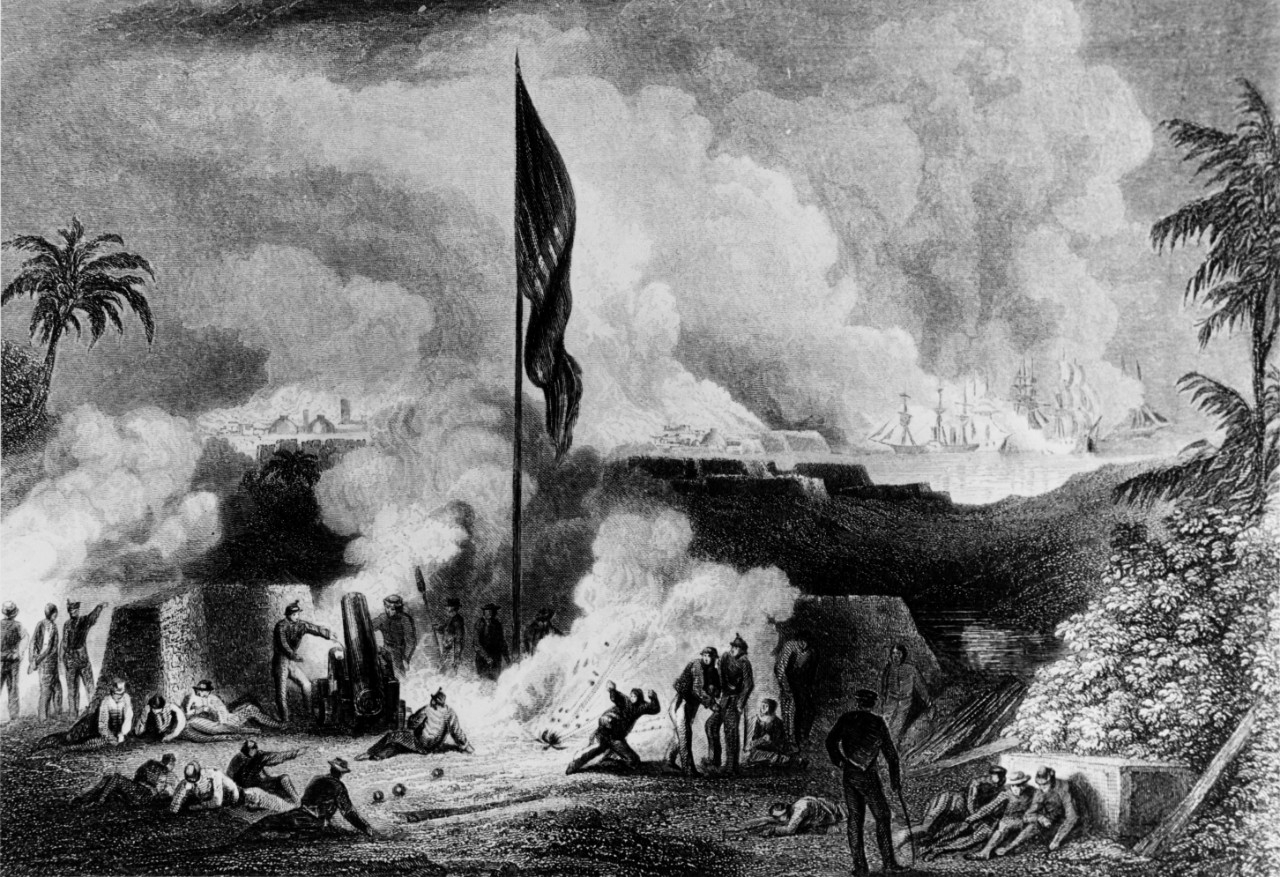Compiled by Brent Hunt, Naval History and Heritage Command’s Communication and Outreach Division
Missouri’s Bombardment Operations—70 Years Ago
From March 14–19, 1951, during bombardment operations off Kyojo Wan, Songjin, Chaho, and Wonsan in support of UN forces in the Korean War, USS Missouri was credited with destroying eight railroad bridges and seven highway bridges, thus contributing materially to the Fast Carrier Task Force (TF 77) campaign against the enemy’s transportation system. Missouri—the first American battleship to reach Korean waters after North Korea invaded South Korea—arrived in the area of operations on Sept. 14, 1950. “Mighty Mo” conducted multiple bombardment operations over the course of the war, including paving the way for the Eighth Army offensive during the Inchon landings. Missouri earned five battle stars for her significant service during the conflict. She had previously earned three battle stars during World War II and hosted the Japanese surrender ceremony that officially ended the war. Missouri’s final combat actions occurred in 1991 in support of Operation Desert Storm. Today, Missouri serves as a museum and memorial ship at Pearl Harbor, HI, where the old battleship is berthed near the USS Arizona Memorial.
Winston S. Churchill Commissioned—20 Years Ago
On March 10, 2001, USS Winston S. Churchill was commissioned at her homeport of Naval Station Norfolk, VA. Winston S. Churchill has a Royal Navy officer assigned permanently to the ship, and she flies the Royal Navy’s White Ensign as well as the Stars and Stripes. The ship is named in honor of Sir Winston Spencer Churchill, who is best known for his courageous leadership as Britain’s prime minister during World War II. Winston S. Churchill is the fifth U.S. warship to be named in honor of an Englishman and the 16th warship to be named after a foreign national—and the only one in active service today.
A Look Back at Navy Medical Corps Ship Namesakes
Since the first ships were named in honor of naval medical personnel, the U.S. Navy has honored 15 physicians as namesakes for some 20 vessels. They range from doctors who have served on the frontlines during major conflicts to prominent leaders, innovators, and pioneers who helped guide the Navy’s Bureau of Medicine through pivotal times in its history. The first physician to be honored as a namesake was the Navy’s first Surgeon General of the Navy, Commodore William M. Wood. Wood was a veteran of the Seminole Wars, the Mexican-American War, and Civil War. He was appointed the chief of the Navy’s Bureau of Medicine and Surgery in 1869, and on March 3, 1871, was the first naval officer to hold the title as the Navy’s top medical officer. More than 40 years after he died, the Navy commissioned USS Wood. The Navy has honored two other Navy Surgeons General as ship namesakes—Commodore J. Rufus Tryon, USS Tryon, and Rear Adm. Presley Marion Rixey, USS Rixey. For more, read the article. For more on Navy medicine, go to NHHC’s website.
Women in World War II Took on Dangerous Military Jobs
Women on both sides of World War II served in official military roles that brought them closer to combat than ever before. In particular, the Soviet Union enlisted upwards of 800,000 women to serve in the Red Army, and more than half served on the front line. The British enlisted the services of women to serve alongside men in anti-aircraft units. Germany followed suit later in the war when it became apparent they needed to mobilize the entire country. Of the major powers, only the United States resisted sending women into combat. However, thousands of women did join the war effort, upending generations of traditional gender roles. The first large-scale enlistment of women into the Navy met clerical shortages during World War I, and the second wave came during World War II. President Franklin D. Roosevelt signed Public Law 689 creating the Navy’s women reserve program on July 30, 1942, which paved the way for officer and enlisted women to enter the Navy. For more, read the article. For more on women in the U.S. Navy, go to NHHC’s website.
Lend-Lease Act Signed—80 Years Ago
On March 11, 1941, the Lend-Lease Act was signed into law. The act gave President Franklin D. Roosevelt virtually unlimited authority to direct material aid such as ammunition, tanks, airplanes, trucks, and food to the war effort in Europe without violating the nation’s official position of neutrality. The aid was intended to assist in the defense of nations whose security was deemed vital to the security of the United States. Roosevelt, who favored U.S. intervention in World War II, advocated creating the program as a way to provide indirect support for the Allies without engaging the United States in a war for which there was not yet overwhelming public support. The Lend-Lease Act was originally intended to help mostly England, but within months, the program was expanded to include China and the Soviet Union. By war’s end, the U.S. had provided more than $49 billion to nearly 40 countries.
Yes, the Navy Also Took the Spitfire Into Battle During World War II
The Spitfire, which debuted 85 years ago, is one of the few aircraft that can be justifiably termed iconic. Although the classic fighter’s service with the British and the U.S. Army Air Force has been documented in numerous books, articles, and other forms of media, it is far less known the Navy briefly used it as well. On June 6, 1944, during World War II, the largest amphibious force in history began the grueling task of liberating Western Europe. Traditionally, the Navy used floatplanes for the mission of airspotting, which was to observe naval artillery targets then transmit their observations back by radio so the guns fire could be adjusted accordingly. They were also used as forward air controllers reporting developments on the battlefield. However, aircraft that normally conducted the airspotting mission—the biplane Curtiss SOC Seagull and the monoplane Vought OS2U Kingfisher—were considered ill-equipped to defend themselves against the Luftwaffe’s Messerschmitt Bf 109 and Focke-Wulf Fw 190 fighters. In an effort to give the pilots a fighting chance, it was decided that 17 pilots from cruiser scouting squadrons and observation squadrons assigned to battleships and cruisers would convert to ex-Royal Air Force Spitfire Mk Vb fighters. For more, read the article. For more on naval aviation, go to NHHC’s website.
Blue Angels and Thunderbirds Debut “Super Delta” Formation
U.S. flight demonstration squadron’s—Navy’s Blue Angels and Air Force’s Thunderbirds—recently debuted the “Super Delta” formation at Naval Air Facility El Centro, CA. The formation consisted of six F-16 Fighting Falcons and six F/A-18 Super Hornets over a C-130J Super Hercules. It was the first time the demonstration squadrons had performed the formation. “The formation grew out of a series of joint training opportunities held in 2020 and 2021, and serves as a symbol of the teamwork, discipline, and skill of the men and women of our United States military forces deployed around the globe,” according to a Thunderbirds statement. “We are humbled to have the opportunity to virtually debut a full flight this Memorial Day weekend during the nation-wide broadcast of the National Memorial Day Parade: America Stands Tall, hosted by the American Veterans Center in Washington, DC, honoring those who have served and sacrificed before us.” For more, read the article. For more on the history of the Blue Angels, go to NHHC’s website.
America’s Pastime and its Naval History
The crack of the bat on the ball or the smell of fresh-cut grass may be a familiar childhood memory for many in regards to America’s pastime, but imagine if a PVC pipe replaced the bat and a wad of rubber bands served as the ball. A hot flight deck replaced the fresh-cut grass. Those are the recollections of countless Sailors and Marines, who have used baseball to pass the time, keep themselves active, and relieve stress while on deployment. While the Navy is partly responsible for exporting the sport, most are not aware of the longtime relationship the Navy has formed with baseball. “The Navy and baseball have a very close connection with each other,” said National Museum of the U.S. Navy historian and curator Gordon Calhoun. “Particularly in the first half of the 20th century, and even going back to the late 19th century. Sailors love baseball. I believe that the Navy helped baseball establish roots in other countries like Cuba, Panama, and Japan. The game itself may have been introduced by other people, but the constant exposure of Sailors playing baseball helped the game to develop and helped those countries and people love the game as much as we do.” For more, read the article. For more on Navy athletics, go to NHHC’s website.
Webpage of the Week
This week’s Webpage of the Week is new to NHHC’s notable ships. USS Rasher was commissioned June 8, 1943, and after trials in Lake Michigan, was decommissioned and then towed down the Mississippi River to New Orleans for recommissioning and fitting. The submarine conducted training in the Bay of Panama before she steamed to Brisbane, Australia, arriving on Sept. 11, 1943. About two weeks later, Rasher was on the move for her first war patrol operating in the Makassar Strait-Celebes Sea area. Over the course of World War II, Rasher received seven battle stars and the Presidential Unit Citation. The boat was credited with sinking 18 enemy vessels accounting for 99,901 tons of enemy shipping. Rasher received two more battle stars years later for service during the Vietnam War. Check this page out today. It contains a short history, suggested reading, interviews with former crewmembers, and selected imagery.
Today in Naval History
On March 9, 1847, a U.S. Army-Navy force launched the siege of Vera Cruz, Mexico, during the Mexican-American War. Commodore David Conner and Commodore Matthew Perry coordinated U.S. land and naval forces with Army Gen. Winfield Scott to land more than 22,000 American troops at Vera Cruz. This would be the largest amphibious operation until the Gallipoli campaign in World War I. With the involvement of the Navy and coordination efforts with Scott, U.S. troops took Mexico City within a few months of the landings. The war ended on Feb. 2, 1848, with the Treaty of Guadalupe Hidalgo, in which Mexico agreed to extend the southern border of Texas to the Rio Grande River, and ceded present-day California, New Mexico, Utah, and Nevada, as well as parts of Oklahoma, Kansas, and Wyoming, to the United States.
For more dates in naval history, including your selected span of dates, see Year at a Glance at NHHC’s website. Be sure to check this page regularly, as content is updated frequently.

